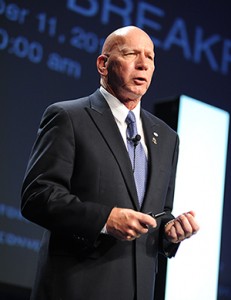
Dear readers, earlier this year I had the chance to attend AMSA’s annual conference and I am really glad that I got to finally meet in person IAM’s CEO, Terry Head. We have already introduced you to the International Association of Movers, its history, evolution and mission as an organization representing international movers. Now, I would like to draw your attention to some crucial ongoing industry issues and some key IAM’s projects that we discussed during our meeting.
Manuela Irwin: What does it take to become a member of the IAM today?
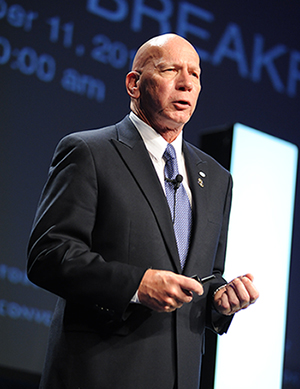
Terry Head, President of the International Association of Movers
Terry Head: Currently, there are about 2000 members from about 170 countries. And, for the last several years the number remains pretty much the same.
We have six different types of membership. Three that are corporate and three that are individual.
On the corporate side, we have governing, which is our highest level of company membership, core and then supplier. And then the three individual membership groups are young professionals, our industry veterans and students. The young professionals are people under the age of 40 and they are actually the largest group ever – we have about 400 members.
As moving is done differently in one region, in one country, even in one city based on the particular marketplace, we do not impose a precise standard on IAM members. Our qualifying process is normally upfront in who applies for a membership.
In the past, if you filled out the application, paid the membership fee and you passed the qualification period, you became a member. Now, to become a member, it is a bit more difficult. First, you have to be in business and licensed in your country for at least a year. Next, you need two other existing members to write you letters of sponsorship to the Association, indicating that they have done business with you and the business has been done properly, according to your instructions. Finally, there is the 30-day comment period. It’s when people have the ability to say that applicant is not credit worthy, or yes, they have paid all their bills.
Another thing we have been doing over the last two years is, besides qualifying the company, we are also looking at the principals who own the company. At least one of the owners need to provide identification, so we know who is behind the company.
There has been a lot of what I call reincarnation. It’s when the individual close one company and then starts another. That is why we are trying to track the individuals that are involved in these companies and we are even developing a database. And, the same thing is being done by a lot of regulatory agencies. Here in the U.S., the FMCSA does that on the domestic side and the FMC also looks at the individuals, so we adopted that same premise in our membership qualification.
It’s difficult to be a policeman for the world as the world is a big place. And, it is not fair to impose a U.S. standard on someone who is doing business overseas. We just have guidelines.
Manuela Irwin: What are some of the issues movers are currently struggling with?
Terry Head: The moving process itself is very similar. It’s the regulations that govern moving that might vary from one country to another. Here in the U.S., international moving is regulated by the FMC. And, they have been very active in the last few years as far as enforcing licensing requirements is concerned. We have now better information regarding who in the U.S. needs to be licensed as an international mover or what they call an OTI.
What is odd is that even if you are located overseas and you are doing moving into the U.S., you need to be at least registered if not licensed. You are given the option of getting a license or you can register as an overseas-based entity and pay a higher bond. If you are a U.S. licensed company, you need to have a $75,000 bond. If you are an overseas-based entity and only registered with the FMC, you need to have a $150 000 bond in place.
Most people in the U.S. don’t understand that they need to be licensed. Even a lower percentage of people overseas understand that they need to be licensed to do moving into the U.S. It is very confusing and we are trying to get passed that bias.
Manuela Irwin: And how do regulations vary in other markets?
Terry Head: In Europe, the most regulated markets would probably be the German, the British and the Italian.

Here in the U.S., international moving is regulated by the Federal Maritime Commission.
As a matter of fact, a lot of that regulation has been brought about by the activity of the moving associations there. Not that they want to be regulated, but they want to standardize. And, the member companies are abiding by those regulations.They are posing a high level of standards that movers have to come up to.
That is basically to compete against all the one-off movers, because it is very easy to get into the moving business. However, it’s not necessarily easy to do the business once you are in it. And that is where the consumers are getting tricked as more and more people are looking online to find a mover, but many don’t do a research about their movers. It’s going to be a long hard road to get the consumer doing the research.
I think the industry here in the U.S. has managed to deal with that issue with help from folks like yourself who are out on the Internet. Smart people are not just looking at the first Google result, getting an estimate and taking the lowest quote. They are now educating themselves. And, the media has helped with that.
Sadly, they focus on the horror stories of rogue operators as well. And I don’t like calling them movers, because they are not. I will never use the term “mover” when I refer to those kind of companies. They are pretending to be in the moving business to basically commit a crime. What they are doing is fraud.
Unfortunately, we are starting to see the same phenomena happening overseas where people are looking for movers on the Internet. And there are some inviable companies who are taking advantage of consumers. Here comes the question of someone who is offering themselves out as a moving company when they are not really a moving company and then assigning the move to another moving company, and the latter are the ones that show up on moving day, but perhaps they don’t have the qualifications that were offered by the initial company.
The reverse situation, if somebody is offering themselves upfront as a facilitator, a broker and says that they are going to find the consumer the best mover for the price the consumer is willing to pay, he is basically an integrator of things. I don’t have any problems with that. It’s just another way of doing business. It’s similar to what Expedia does for airlines. It gives the consumer access to variety of options.
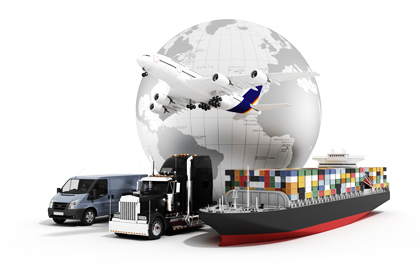
A freight forwarder may not own own a truck or a warehouse, they may just help with the various aspects of the moving process, but they have the liability for each step of the move.
I don’t say brokers should be eliminated, but they should be doing business bound by the same rules like the household goods carriers. And I think, the FMCSA sees that need. Now there is the law that has to say they can control brokers that way.
It’s not that big the difference between a broker and a freight forwarder, except that the latter has a liability for insuring the shipment till it’s completed and the liability for any claims that may occur. The freight forwarder needs to be licensed properly. They don’t necessarily own a truck or a warehouse, they may just help with the various aspects of the moving process. They will find somebody to pack the cargo, they will find a steamship to take it, they will have somebody do the customs clearance and they will find a truck to deliver it. They have the liability for every one of those components. And brokers, once they turn the cargo over to somebody, their liability ceases. The liability is transferred to the new entity.
Manuela Irwin: How has the industry changed for the last years?
Terry Head: On the U.S. domestic side, the customer itself is changing. I use the term “the nanoshipper” to refer to the millennials who have come in the workplace during the last years. They change jobs more often, they move to another place more often than my generation did and they have less personal items than my generation did. Plus, they are single and don’t have time to arrange the move by themselves. They don’t have time to have three people come and do an in-home estimate. They look for methods by which they can best utilize their time.
Millennials would go to the Internet at night to look for their mover. They are looking for the cheapest way to get to the new city and I think that has led the way to various market disruptions, like the video estimates. You can walk around your house with your smartphone and then you just send the video and come up with a pretty good estimate. And, you can do it at midnight or at 2 am when you have the time to do it.
And, it’s not just the way how consumers are choosing a mover that is changing, but the way how they are actually being moved is changing as well.
In the past, we call it the ‘padded-van service’, we had a moving van pulled up in front of your house and it got cloth pads to pack your belongings. The movers would load the van with your items wrapped in the cloth pads, then they would drive off and deliver the shipment to your new address. We are not seeing that anymore. We don’t have the drivers to support that and the size of the shipments doesn’t support that anymore.
We are seeing an increased use of what we call alternative transportation. There has been a growth of the portable, mobile storage containers of which there is a huge variety. There are many companies that now offer containerized moves. Many consumers are looking at utilizing that method of moving. Some of them are just renting the container, packing and loading it by themselves, others are hiring moving labor to pack and load the furniture into the container. And then it get picked up and shows up on the other end when the consumer is ready to take advantage of delivery when he has the time.

Millennials don’t have time to arrange the move by themselves. They don’t have time to have three people come and do an in-home estimate. They look for methods by which they can best utilize their time.
The containerization in both U.S. markets is probably the biggest single challenge that we are seeing. There is no question about it. And, that leads to the need to train our labor force. If you are doing international moving and you are used to loading the traditional wooden lift van, or what we call a ‘loose load’, into a steamship container, your crews are probably skilled at that type of padding, wrapping and loading. Most domestic movers don’t have that skill level. They now need to be trained how to do it. IAM and AMSA are cooperating on developing some training material which can be both used in the domestic market, but is also applicable to loading containers in the international market as well.
As far as the rest of the world is concerned, I think we are on the gasp of a great explosion. We have already seen it in India.
India has attracted a lot of a U.S., UK and European Union companies to tap in to the affordable, trainable labor force. We have seen the middle class grow and we have seen a number of people now moving around India. In the past, if you lived in New Delhi, you would probably live your entire life there. Moving industry market in India is very robust now – people move between its major cities. And that has been in place for probably 10 years.
And we are going to see that phenomenon happen in Africa and in the Far East. A lot of European and Asian-based companies are moving employees to tap into natural resources in those regions.
Asia is a tremendous market and no one has even thought about it. China alone, because of its large population is going to become a market that will double, triple and quadruple in the next ten years. Again, it’s because of the rising of the middle class. People who now have the financial stability to consider hiring a professional mover. Earlier, it was either you didn’t move, you didn’t have anything to move, or you would relocate with a few suitcases. Now people are acquiring things, they have belongings to move.
Manuela Irwin: What key projects are you currently working on?
Terry Head: The standardization within our industry is a pivotal project. We have been working for probably about 15 years on obtaining a standardized code for the language within our industry. And that is primarily for exchanging of the inventory and manifest information between countries.
IAM is a certified standards developer as denoted by the American National Standards Institute. And we worked for about 4 years to get a U.S. standard for a language code which allows the information to be translated from country to country as every item has a code.
And we are now hoping within the next 6 months to have that developed and approved as an ISO standard by the International Organization for Standardization. That will be a culmination for us. It has been a long road. That will enable the entire industry to talk to each other.
The standard will also help with what we know will be ultimately required from us from a security standpoint. The U.S. and the EU, and everyone else wants to know what’s being brought into their country. This code now that is in electronic format can be analyzed by Customs and Border Protection or whatever the equivalent is in the particular country and they no longer have to look at handwritten list of inventory. I think it will revolutionize the exchange of information from one mover from one country to another mover in another country.
The other key project we are working on is what we call our ‘data analytics effort’. The industry has never really received full recognition as an industry itself. We have the moving industry slumped under transport in most places. Household goods get treated as freight and they are totally different from freight. As we like to say, “Our cargo talks back”.
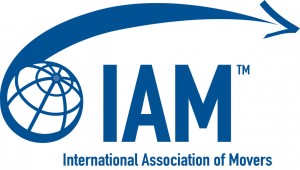
IAM has developed an American National Standard that codifies household goods shipment information and facilitates the exchange of data between industry stakeholders.
Many of the regulations we have to deal with come from the freight side. IAM is working with FEDEMAC, FIDI, OMNI, BAR to try to raise awareness of the household goods industry, so we can be treated as an industry itself, where we would have national classification codes. Nobody thinks about movers when they are passing regulation. It is all about transport. It is all about cargo.
In order to get to that point, we have to develop a method by which that information can be collected, so we know how many movers are there, how many moves each of us handle, where do those moves move from, how big are those moves. Nobody has that data to put it in front of legislators, so that is our next goal.
AMSA has done a good job on the U.S. side, collecting that data. We don’t have that information on a global scale. It’s a big challenge.
In the last few months we have been working on developing a standardized notification form where we would be utilizing the existing codes and hopefully our members would be willing to provide that information, so we can start capturing all the information and take advantage of the notification form, which again is electronic codes. Every city has a code, every port has a code, every airline has a code, and every ocean carrier has a code.
Using this notification form, we can capture that data and be able to put it in front of governments. It would be valuable to the industry itself as well, because everyone would like to know how much business is moving into the U.S., or out of China. We are not going to give specific information about the companies. We just want to know on a global scale where is the business going, where are new markets showing up, what is the size of the shipments, what is the claims data like, what kind of claims are there and what is the level of the claims. And first, you need to have a robust database in order to capture and analyze the information, and then share that information.
Manuela Irwin: What are some critical problems disrupting the moving process?
Every customs office is very similar and every customs office is very different. In the U.S., there are 13 customs districts and there are rules and regulations that district directors are supposed to enforce, but each of them can enforce the law in almost their own way. You can bring a shipment in Houston and you can bring a shipment in Seattle and they can be handled totally differently as far as what documentation is required, when is it required etc.
And it’s even worse overseas. In many cases, the customs authority are revenue generators. There are rules and regulations as far as what household goods are allowed to come in, but that fluctuates. Many times, I call it “the expedited customs” and it’s a cultural characteristic in many cases, if you want to get your shipment cleared, you may need to pay a special fee to get it done quicker. It takes a good destination agent to know how the system works.
Consumers should also be aware of the fact that when a shipment comes to the U.S., the Customs and Border Protection is capturing the personal information and they are selling that personal information to other companies.
When you move to the U.S., there is the entry manifest that has the name of the shipper – where they are moving from, where they are moving to, their home address, and the CBP captures and then under law sells that personal information to different companies who then in their turn sell it to service companies who are interested in receiving that kind of information. Somebody who moves to the U.S. needs a new bank, a new doctor, a new cable company, they probably need to buy a new car.
The worst part is that consumers usually think that their movers must have sold the information, because they are the only ones who know that personal information. The moving industry gets blamed for selling that information when in reality it’s our own Government that is selling it.
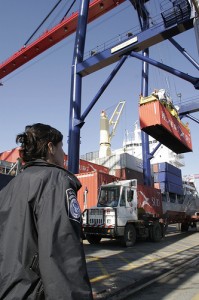
When you move to the U.S., the CBP captures your personal information and then under law sells it to different companies.
And, it’s a loophole. We understand why they want to capture all that data on the freight. It’s to basically understand what is moving in and out of the country, what is our balance of trade – I can understand capturing that, but selling that personal information is actually abuse of power.
We have been working with the CBP for the last couple of years to veil that information for the household goods customer and they have stonewalled us to a certain extent, saying they would change it, but then they didn’t change it and recently they have said they cannot change it, so we have to change the law, because the law allows them to do it. The law actually requires them to do it.
We are now working with a number of congressional offices to have some statuary language changed where the consumer information would be veiled and no longer shared. Hopefully, we will see that happening in the next six months or so.
What is your best advice to international movers?
The first piece of advice is if you are going to be involved in international moving, be properly licensed to do international moving here in the U.S., comply with the requirements.
Next, understand what is involved in international moving, because it is different. It is quoted differently, it is handled differently and it’s regulated differently. You need a different type of expertise for international moving, both in selling to the consumer and operationally in dealing with the reciprocal mover overseas.
Mind that the cost structure is different as well. You have to know not only your costs of doing business, but the costs of doing business with all other parties involved – the trucking company, the port agent, the ocean carrier, the customs broker, the destination agent.
If you want to stay in business and make money, you need to be acquainted with the cost structure, so you can give fair and reasonable quotations and be sustainable.
Thank you for sharing your insights with us President Terry Head and keep up the great work.
Thank you for being the voice of the international moving industry, for raising awareness of the critical problems international movers face up and helping movers thrive.
Looking forward to our next meeting!